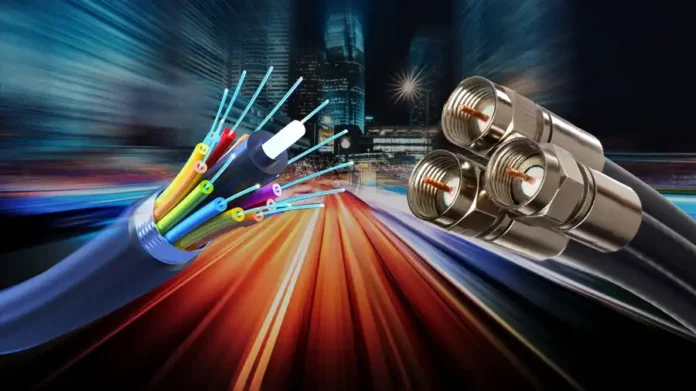Have you ever wondered which type of internet connection is better: fiber or cable? Even in 2024, there’s a lot of debate by many people and businesses about which one is better.
Fiber internet uses light signals to send data through thin glass fibers, giving you faster and more reliable connections. Cable internet, which is widely used, uses coaxial cables and offers a solid alternative to fiber.
According to a recent study by the Fiber Broadband Association, the adoption of fiber internet has been increasing. In 2021, over 60.5 million homes in the U.S. had fiber internet broadband.
Now, let’s explore in detail which one is better in 2024.
1. Speed
Fiber Internet
Fiber internet is renowned for its incredible speeds, often reaching up to 1 Gbps or more. This makes it ideal for heavy internet users, large households, and businesses that require high-speed connections. Activities like video conferencing, cloud computing, and streaming high-definition content can be done without buffering. The exceptional speed of fiber internet for business is beneficial for enhanced productivity.
Cable Internet
Cable internet offers respectable speeds ranging from 100 Mbps to 500 Mbps. This is sufficient for most households, including those that stream videos, play online games, and work from home. However, it may not match the ultra-fast speeds of fiber internet, especially during peak usage times when the network can get congested.
2. Reliability
Fiber Internet
Fiber optics are less susceptible to interference and weather conditions than other types of internet connections, resulting in more stable and reliable connectivity. Fiber networks are also less prone to outages and typically have lower latency, which is crucial for real-time applications like online gaming and video calls.
Cable Internet
Cable internet is generally reliable but can be affected by network congestion. This is especially true during peak hours when many users are online simultaneously. Coaxial cables are more vulnerable to electromagnetic interference, which can affect performance. Despite these issues, many users find cable internet to be reliable enough for their needs.
3. Availability
Fiber Internet
The availability of fiber internet is expanding rapidly but is still limited compared to cable. Fiber networks are mainly found in urban areas and some suburban regions. Rural areas often need more fiber infrastructure due to the high costs of deploying fiber optic cables over long distances.
Cable Internet
Cable internet is widely available in many areas, including urban, suburban, and some rural regions. The existing infrastructure for cable TV services allows for relatively easy expansion of cable internet services, making them accessible to a broader audience.
4. Cost
Fiber Internet
Fiber internet tends to be more expensive than cable in terms of installation and monthly fees. However, prices have decreased as competition increases and more providers enter the market. The superior speed and reliability of fiber connections often justify the higher cost.
Cable Internet
Cable internet is usually more affordable and offers a good balance between cost and performance. Many providers offer bundled packages that include cable TV and phone services, which can provide additional savings. However, users might experience lower speeds and reliability compared to fiber.
5. Installation Process
Fiber Internet
Installing fiber internet can be more complex and take longer. It involves laying down new fiber optic cables, which might require digging trenches or using existing conduits. Depending on the location and existing infrastructure, this process can take several weeks or even months.
Cable Internet
Cable internet installation is generally quicker and easier. It uses existing coaxial cables, so the process usually involves a technician setting up the modem and connecting it to the network. This can often be done within a few hours.
6. Environmental Impact
Fiber Internet
Fiber optic cables are made from glass, which is better for the environment than the plastic used in coaxial cables. Fiber networks also use less power than cable networks. This means they have lower energy consumption and a smaller carbon footprint.
Cable Internet
Cable networks, while more established, use more energy than fiber networks. The plastic and metals used in coaxial cables have a higher environmental impact during production and disposal. In contrast, fiber optics use glass, which is more environmentally friendly.
7. Customer Satisfaction
Fiber Internet
Fiber internet users often report higher satisfaction due to faster speeds, lower latency, and excellent reliability. The overall user experience is superior, making fiber a preferred choice for those who have access to it.
Cable Internet
Cable internet users generally have a good experience. However, satisfaction can vary depending on the provider and network congestion level. While it provides reliable service for most users, some might experience slower speeds during peak times.
Conclusion
Choosing between fiber and cable internet depends on your specific needs and circumstances. If you require the fastest speeds and most reliable connection, and fiber is available in your area, it might be worth the extra cost.
In the end, fiber and cable have their strengths and can provide excellent internet service. Assess your internet usage, budget, and availability of services in your area to make the best decision.



































